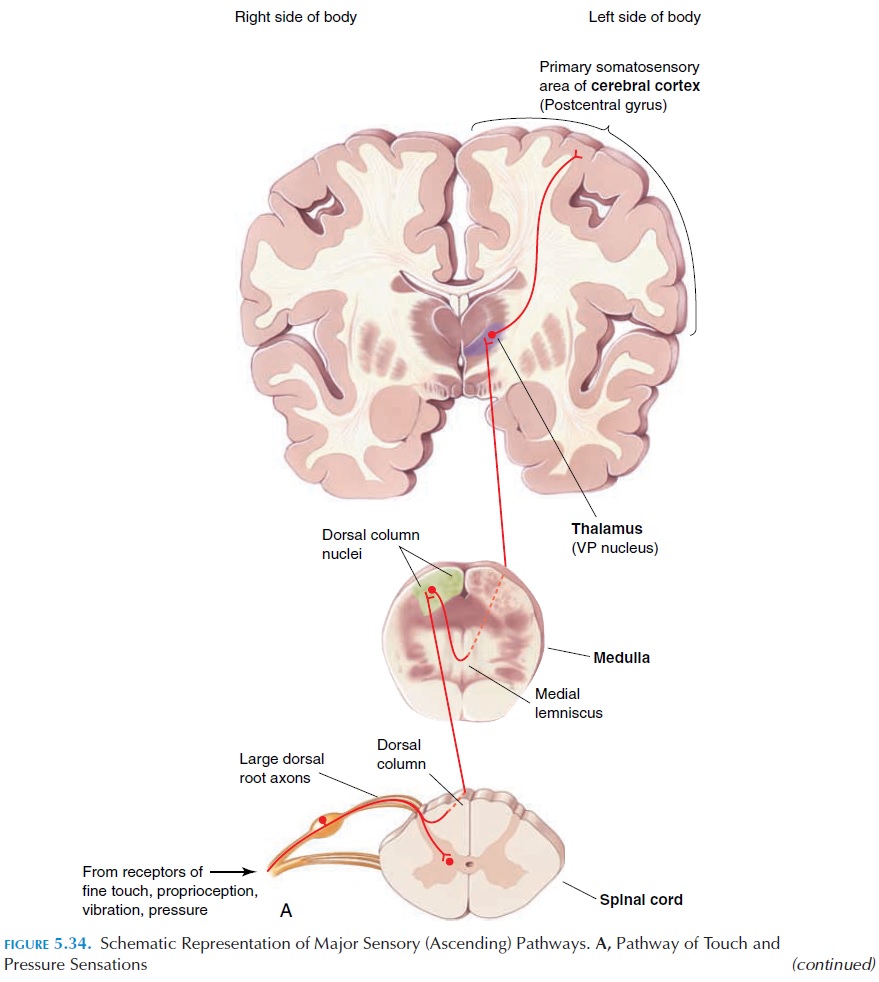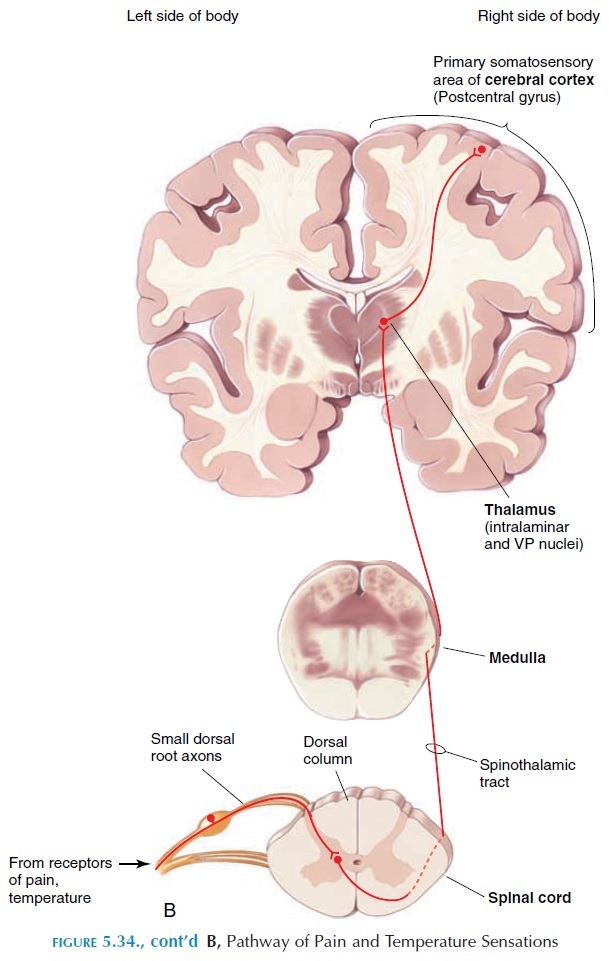Chapter: The Massage Connection ANATOMY AND PHYSIOLOGY : Nervous System
Direct Pathway of Fine Touch and Proprioception Senses
DIRECT PATHWAY OF FINE TOUCHAND PROPRIOCEPTION SENSES
All fibers carrying fine touch sensations and proprio-ceptive sensations move to the dorsal column of the spinal cord and ascend to the medulla oblongata (see Figure 5.34A). These are first-order neurons, as they are the first neurons to carry impulses produced by these sensations. At the medulla, they synapse with a second-order neuron. The location where theysynapse is known as the nucleus gracilis and nu-cleus cuneatus, and the tract carrying these sensa-tions from the spinal cord/brain stem is the fascicu- lus gracilisand fasciculus cuneatus or the dorsal (posterior) column. The second order neurons crossthe midline to the other side of the medulla and as-cend to the thalamus where they synapse with third-order neu-rons. The tract that carries these impulses from themedulla to the thalamus is known the medial lem-niscus. Fibers from the thalamus carry the impulsesto the sensory area of the cerebral cortex. Fibers car-rying these sensations from the head join the other fibers from the rest of the body in the brainstem region and take the same path to the cerebral cortex.

The impulses carried by this tract enable a person to identify the shape, size, and texture of an object and point of stimulation; the direction of movement and position of body parts; vibratory sensations; and to identify an object by feel (stereognosis).
The dorsal horn can be considered as a gate that translates impulses that come into the CNS into as-cending tracts. The impulses that come in via the dor-sal root can be modified to some extent in the dorsal horn. Branches of fibers in the dorsal column synapse with other sensory fibers in the dorsal horn. In this way, they are able to affect the impulses gen-erated by other sensory systems, such as pain.

Related Topics